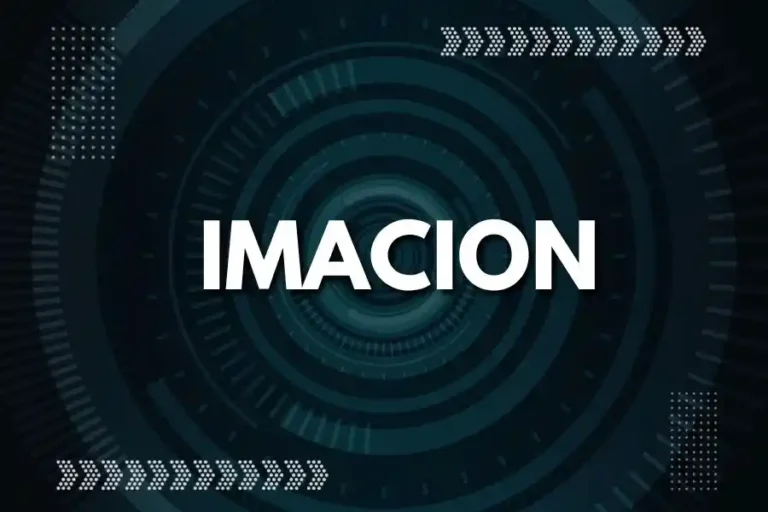“The Impact of Technology in Modern Society”

Let’s explore the exciting world of technology together! In this introduction, we’ll discover how technology impacts our lives. It’s all around us, making things easier and connecting us more than ever. Technology keeps evolving and changing our lives, from smartphones to computers to advanced machines.
Technology is like a puzzle with many exciting parts to uncover. Each piece we fit together reveals something new and unique. So, get ready for an exciting journey into the world of technology!
Definition of Technology
Technology refers to the gadgets, applications, and systems people develop to address challenges or enhance their lives. It contains numerous innovations and developments that have impacted how we work, live, and communicate.
Technology is mainly about applying information and abilities to design and construct items that enhance our daily life. Early past generations built simple tools like arrows and wheels at the beginning of civilizations long ago.
Technology can take many forms these days and is all around us. Neither a pencil nor a supercomputer could be used as a symbol of simplicity. It is very significant for transit.
The Importance of Technology
Technology serves as vital to our daily life. It simply refers to the devices, tools, and inventions that people develop that solve issues that boost the efficacy and ease of everyday life.
Telecommunication is one of the areas of technology that has had the most significant impact. We can engage immediately with individuals worldwide because of smartphones, laptops, and the internet. It makes the globe seem smaller and more attributed by making it more straightforward to remain in touch with friends and family, collaborate with coworkers, and meet new people.
Technology has influenced education, making it easier to comprehend and enjoyable. Learners of varying ages can benefit from the information available at their fingertips thanks to distance learning, learning apps, and engaging platforms.
Technology has modified operations and everywhere reach in the manufacturing business. It helps both major corporations and startups operate successfully. Additionally, the ease of spending from home has reshaped our shopping method, thanks to e-commerce platforms.
Technology has led to astonishing improvements in the healthcare industry. The quality of patient treatment and our knowledge of medical diseases have been improved with medical imaging, diagnostic equipment, and life-saving techniques.
Types of Technology
Technology comes in various forms, each serving a specific purpose and transforming our lives. Let’s explore some of these types of technology:
1. Information Technology (IT): This type focuses on processing, managing, and sharing information. Computers, software, and the internet are examples, enabling us to access data, communicate globally, and do complex tasks.
2. Communication Technology: It helps us exchange information and ideas. Smartphones, social media, email, and video conferencing tools are part of this category, making communication fast and easy.
3. Transportation Technology: This type revolutionizes how we move from one place to another. From aeroplanes to electric cars, transportation tech makes travel faster and safer.
4. Medical Technology (MedTech): It plays a crucial role in healthcare, including medical devices and imaging technologies that improve patient care.
5. Biotechnology: This involves manipulating living organisms to create products or solve problems, with applications in medicine, agriculture, and the environment.
6. Green Technology: Also known as clean or sustainable technology, it focuses on eco-friendly solutions like solar panels and wind turbines to address environmental challenges.
7. Entertainment Technology: This enhances our leisure time with gaming consoles, virtual reality headsets, streaming services, and more.
8. Educational Technology (EdTech): EdTech aims to improve learning through online courses, interactive platforms, and educational apps.
9. Robotics and Artificial Intelligence (AI): Robotics creates machines that can work autonomously, while AI enables devices to simulate human intelligence used in various industries like manufacturing and healthcare.
10. Nanotechnology: It deals with manipulating materials at the molecular level and has applications in medicine, electronics, and more.
What is the primary purpose of technology?
Technology serves primarily to better and simpler our lives. It permits us to do more in several sectors by making jobs faster and helping us overcome issues. From simple tools in the past to revolutionary gadgets now, technology has grown over time, intending to serve our wants and desires.
The primary aim of technology is to deliver solutions that increase our daily life. Technology helps us save time and effort so that we may focus on more important things; maybe it’s using a kitchen appliance for cooking, a smartphone to interact with friends and family, or the GPS to travel.
Connecting people is an integral purpose of technology. We can interact with friends and family worldwide by using social media, the web, and apps for messaging. Virtual meetings and video calls bring us closer even when we are far apart, promoting understanding and global connections.
Role of technology in human life
Technology plays a crucial role in every aspect of our lives. It simplifies our daily routines and saves time. From household appliances that automate chores to smartphones that keep us connected on the move, technology makes life more convenient and efficient.
In education, technology has transformed learning. Online courses, interactive textbooks, and educational apps provide valuable resources for students of all ages, making education accessible and engaging.
In healthcare, technology has led to groundbreaking advancements. Medical devices, imaging technologies, and telemedicine services improve patient care, saving lives and enhancing healthcare quality.
In the business world, technology has revolutionized operations. Streamlined processes, efficient communication, and e-commerce platforms empower businesses to compete globally.
Entertainment has been dramatically enhanced by technology. High-definition displays, virtual reality experiences, and streaming services offer diverse entertainment options to suit individual preferences.
Role of IT in Society
Almost every element of our lives is influenced by information technology (IT), which immensely impacts society. IT has transformed collaboration, making it quicker and more easily obtainable. We can communicate with relatives, coworkers, and close friends worldwide using cell phones, networking sites, and messaging apps, which promotes cross-cultural understanding.
It provides unparalleled access to information. The internet offers a vast knowledge repository, empowering individuals to learn about any topic quickly. Search engines, educational websites, and digital libraries make education and research more accessible.
It plays a significant role in the business market. It can be utilized by innovators and large enterprises to streamline operations, organize steps, and users’ needs online and through online sales. The result boosts innovation, efficacy, and expansion of the economy.
It has transformed education, with online platforms and virtual classrooms offering personalized learning experiences for students. It equips them with essential digital skills for success in the modern world.
In healthcare, IT has revolutionized patient care and medical research. Electronic health records improve treatment accuracy and coordination, while telemedicine and health apps enable remote consultations and personalized healthcare solutions.
It has also enriched entertainment and leisure. Streaming services, online gaming, and virtual reality experiences provide diverse entertainment choices accessible anytime, anywhere.
It enables efficient information management and data analysis. Organizations and governments can store, process, and analyze vast amounts of data, leading to better decision-making and insights.
It contributes to environmental conservation efforts, with intelligent systems monitoring energy consumption, waste management, and resource usage more effectively, promoting sustainable practices.
How has technology changed the world?
Communication: One of the most noticeable changes is in contact. We can now easily connect with people worldwide thanks to the internet and smartphones. Social media, messaging apps, and video calls have made the world feel smaller, breaking down geographical barriers.
Business: Technology has also revolutionized how businesses operate. From small startups to big companies, everyone uses technology to streamline their work processes, automate tasks, and reach customers online through e-commerce.
Healthcare: Technology has brought remarkable advancements in healthcare. Medical devices, diagnostics, and telemedicine have improved patient care, improving treatment outcomes and saving lives.
Entertainment: Entertainment has been taken to new heights with technology. High-definition displays, virtual reality experiences, and gaming consoles offer exciting and immersive entertainment options.
Positive effects of technology on society
Technology has had many positive impacts on society, making our lives better in various ways.
Improved Communication: Technology has made communication faster and easier. We can connect with friends and family anywhere, fostering a sense of global community.
Education: Technology has transformed education, making learning more accessible. Online resources and educational apps provide a wealth of knowledge for students of all ages.
Healthcare Advancements: Medical technology has significantly improved healthcare. Advanced devices and diagnostics help detect and treat illnesses more effectively.
Entertainment and Leisure: Technology has enriched our leisure time with various entertainment options, catering to different interests and preferences.
Advantages and disadvantages of using technology
Using technology has its advantages and disadvantages. Let’s take a look at both sides:
Advantages
1. Improved Communication: Technology allows us to stay connected with loved ones and collaborate with colleagues no matter where they are.
2. Enhanced Education: Online learning resources make education more accessible and offer personalized learning experiences.
3. Efficient Work Processes: Technology streamlines business operations, increasing productivity and expanding market reach through e-commerce.
4. Healthcare Advancements: Medical technology improves healthcare outcomes and early disease detection.
5. Entertainment and Leisure: Technology provides diverse entertainment options for relaxation and enjoyment.
6. Scientific Research: Technology aids scientific discoveries and helps us understand the world better.
Disadvantages
1. Digital Divide: Not everyone has equal access to technology, creating a gap between those who have access and those who don’t.
2. Privacy Concerns: Technology raises privacy issues, and personal data can be vulnerable to misuse.
3. Health Challenges: Excessive screen time and sedentary behaviour due to technology can lead to health problems.
4. Job Displacement: Automation can lead to job loss in some industries.
5. Dependency: Overreliance on technology may hinder critical thinking and problem-solving skills.
6. Social Disconnect: Too much technology use can lead to reduced face-to-face interactions and social isolation.
How technology helps the environment?
Technology plays a big part in helping the environment by offering innovative solutions to environmental issues and promoting sustainability. Let’s explore in simple terms how technology positively impacts the environment.
1. Renewable Energy: Technology helps us use renewable energy sources like sunlight, wind, and water to generate clean energy. This reduces pollution and greenhouse gas emissions, making our planet greener.
2. Energy Efficiency: With technology, we can use energy more efficiently. Intelligent appliances, LED lights, and energy-efficient buildings save energy and reduce our impact on natural resources.
3. Waste Management and Recycling: Advanced technology improves waste management and recycling. Some facilities turn non-recyclable waste into electricity, reducing landfill use and harmful emissions. Innovative recycling technologies also help reuse valuable resources.
4. Environmental Monitoring: Technology allows us to monitor the environment in real time. We use satellites, sensors, and data analysis to track changes, study ecosystems, and make informed decisions about conservation.
5. Green Transportation: Technological advancements in transportation give us electric vehicles and efficient public transit systems, reducing pollution and our dependence on fossil fuels.
6. Precision Agriculture: Technology has transformed farming with precision techniques. Drones, GPS, and smart irrigation save resources like water and pesticides while promoting soil health and biodiversity.
Why is technology the future?
Technology is the future because it holds the key to progress and uniquely shapes the world. In simple terms, here’s why technology is essential for our future:
1. Innovation and Progress: Technology keeps advancing and finding solutions to challenges, making the world better and pushing human progress.
2. Enhanced Communication: We can communicate easily worldwide with technology, breaking barriers and bringing people together.
3. Improving Life: From healthcare to energy solutions, technology improves our lives, making things better and more sustainable.
4. Automation and Efficiency: Technology automates tasks and makes things more efficient, making life easier and more productive.
5. Empowering Education: Technology revolutionizes education, making learning accessible and personalized for everyone.
6. Scientific Discoveries: Technology helps us explore and make discoveries, from space to the smallest particles.
Main goals of technology
The main goals of technology are to improve our lives, solve problems, and advance human progress. Here’s what technology aims to achieve:
1. Enhancing Efficiency: Technology makes tasks easier and faster, saving time and effort.
2. Improving Communication: Technology connects people and helps us share information easily.
3. Advancing Education: Technology expands knowledge and promotes learning for everyone.
4. Driving Innovation: Technology fosters creativity and new ideas, advancing all fields.
5. Creating Convenience: Technology makes life more convenient with intelligent solutions.
6. Promoting Sustainability: Technology works to protect the environment and ensure a better future.
7. Empowering Individuals: Technology empowers people with knowledge and opportunities.
8. Improving Healthcare: Technology helps advance medical care and treatments.
9. Enabling Exploration: Technology drives curiosity and exploration, expanding our world understanding.
In ordinary terms, technology is a strong force that makes better our lives, joins us, and propels growth in numerous ways. It plays a crucial part in preserving our environment and developing communities and individuals.





